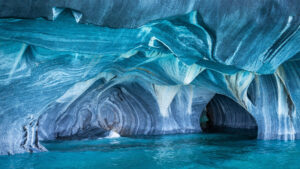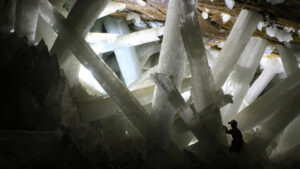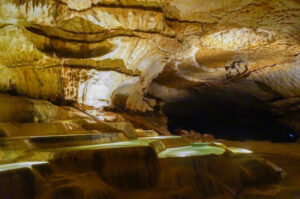In 2007, a group of cave divers began probing an underwater cave in central Sweden’s Jämtland Mountains. When they began, they had no idea they were going to discover Sweden’s largest underwater cave system. Fifteen years later, they are still exploring it. They were there last week.
Cave diving is notoriously dangerous. The handpicked team of 20 had to cope with deep snow, ice, and freezing temperatures. And that was even before entering the cave.

Photo: @ExpeditionBjuralven
Their 13th expedition into the caves began on March 25. The only years they didn’t go were the pandemic years of 2020 and 2021. This year, they split into two teams and focussed on separate caves: Bjurälvsgrotten and Festins.
Each winter, the challenges are similar. The first is just getting to the flooded caves. No roads or villages exist nearby. They must snowmobile to the northwestern Jämtland range. They only dive in winter because at other times of the year, vehicles are banned to preserve the fragile vegetation in this national park. Also, the current through the caves is too strong in summer.

Photo: @ExpeditionBjuralven
Once they get there, they must first shovel out metres of snow, plus debris from the previous summer, blocking the entrance. Then they make reconnaissance dives to set up equipment and leave spare air tanks in the areas that they have already mapped.
The entrances to the caves and the passages within are so narrow that the equipment must be side-mounted. The cave system has many sumps. Sumps are flooded areas within the cave that make exploration by dry cavers impossible. As of 2016, they were diving in Sump 5.
In sump diving, cavers must navigate tight passageways and vertical drops, often crawling and dragging equipment while wearing scuba-type gear. The water temperature hovers around 0°C, so all divers wear drysuits. Drysuits are not known for their streamlined nature.

Photo: @ExpeditionBjuralven
On the third day of this year’s expedition, the teams made it into both caves. Bjurälvsgrotten had a much more challenging entrance. Every diver had to make a 10m vertical descent inside a waterfall before disconnecting from the ropes. Once inside, they needed to shovel to improve accessibility.
Throughout the week-long expedition, diving at Bjurälvsgrotten was a struggle because of the heavy flow even at this time of year. They were more successful in Festins. After five days, they discovered virgin caves and were able to complete 30m of surveyed line.
“Thirty metres doesn’t seem a lot,” they explained, “but it requires quite great effort [to map] every metre of virgin cave.”
They then surveyed a further 30m of line. At the end of their expedition, both teams did some preliminary diving at Meandergrottan, the lowest known outlet of the Bjurälven River. They hope to explore that region further in the future.

The newly mapped Festins cave. Photo: @ExpeditionBjuralven
Expedition Bjurälven is named after the Bjurävlen Valley where the exploration is taking place. That whole region is awash in caves. For many caves, records of exploration date back to the mid-20th century. Researchers with the expedition believe that all of the caves in the area may connect into one giant cave system.
So far, their theory has stood up. So far, they have discovered 2.43km of linked passageways and caves, making it the longest underwater cave in Sweden. No one knows how much further it stretches. Finding that out is a job for years to come.






